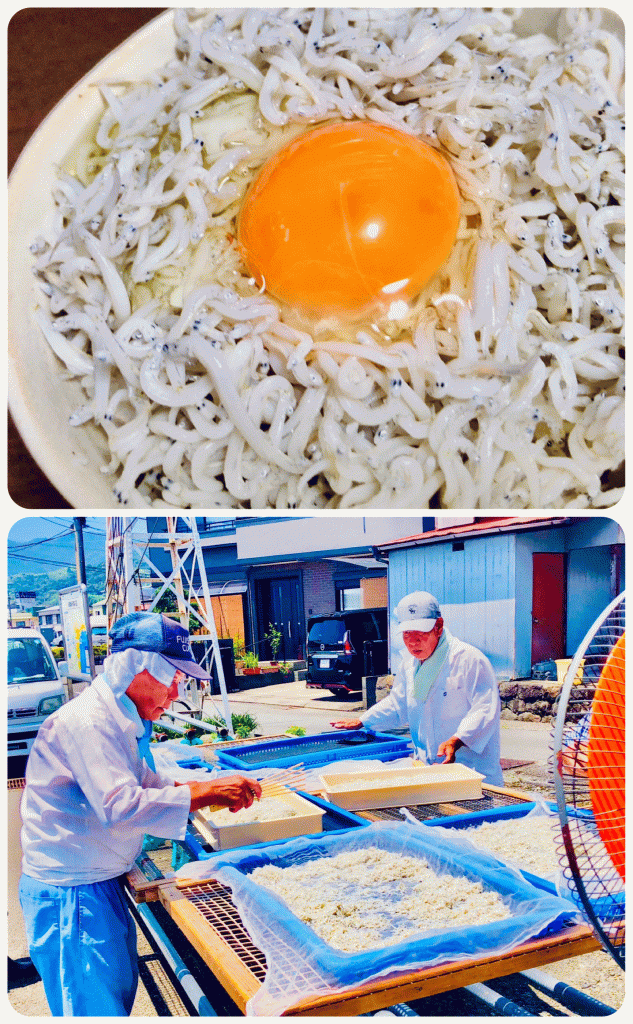
While freshwater eel during the midsummer days is delightful, the shirasu (fresh-caught baby sardines) of summer fishing are exceptional too. The newly caught shirasu, measuring about 2 to 3 centimeters in length, have a transparent silvery-white body color and an indescribable texture. However, shirasu lose their freshness quickly, and they are best eaten immediately after being caught. Most often, they are quickly salt-boiled right after being landed. The ones salt-boiled to retain about 80% moisture are called “kamaage shirasu,” while those dried to about 70% moisture become “shirasu-boshi,” and when reduced to 50% or less moisture, they are referred to as “chirimen-jako.”
Urban dwellers seldom get the chance to taste even “kamaage shirasu.” The shirasu fishing season varies by region but is generally from March to October. The peak seasons are from April to June and from August to October, with September to October being especially known for its delicious fatty shirasu.
The shirasu during this time are called “summer shirasu,” still small and with a mild taste. Some people even prefer these over the “autumn shirasu,” which comes later in the year.
土用の鰻もいいですが、夏漁のしらすも格別です。取り立てのしらすは体長2~3センチほどで、透きとおった白銀色の体色をしていて、えもいえない歯ごたえがあります。しかし、しらすは鮮度が落ちるのが早く、生しらすが食べられるのは水揚げ直後です。多くは、水揚げすると直ぐに塩茹でにします。塩茹でしたしらすで水分量8割ほどのものを「釜揚げしらす」、干して7割程度の水分量にしたものを「しらす干し」、5割以下になったものを「ちりめんじゃこ」と呼びます。 都会人には「釜揚げしらす」も滅多に口に入りません。しらす漁の時期は地方によって異なりますが、3月から10月くらいまでです。旬の時期は4~6月と8~10月で、特に9~10月の間は脂がのって美味しいといわれています。 今の時期に取れるしらすは「夏しらす」と言って、まだ小さくて、味もあっさりしていますが、「秋しらす」よりもこちらな方が好きだと言う人もいます。
